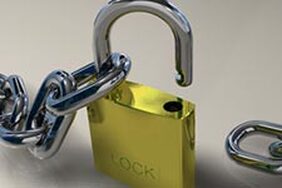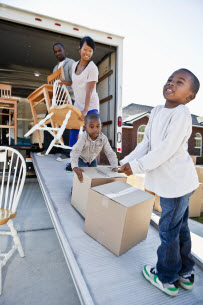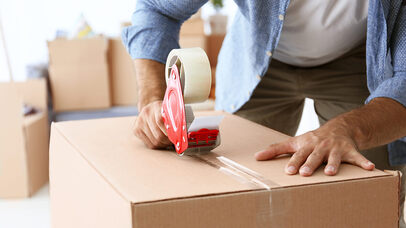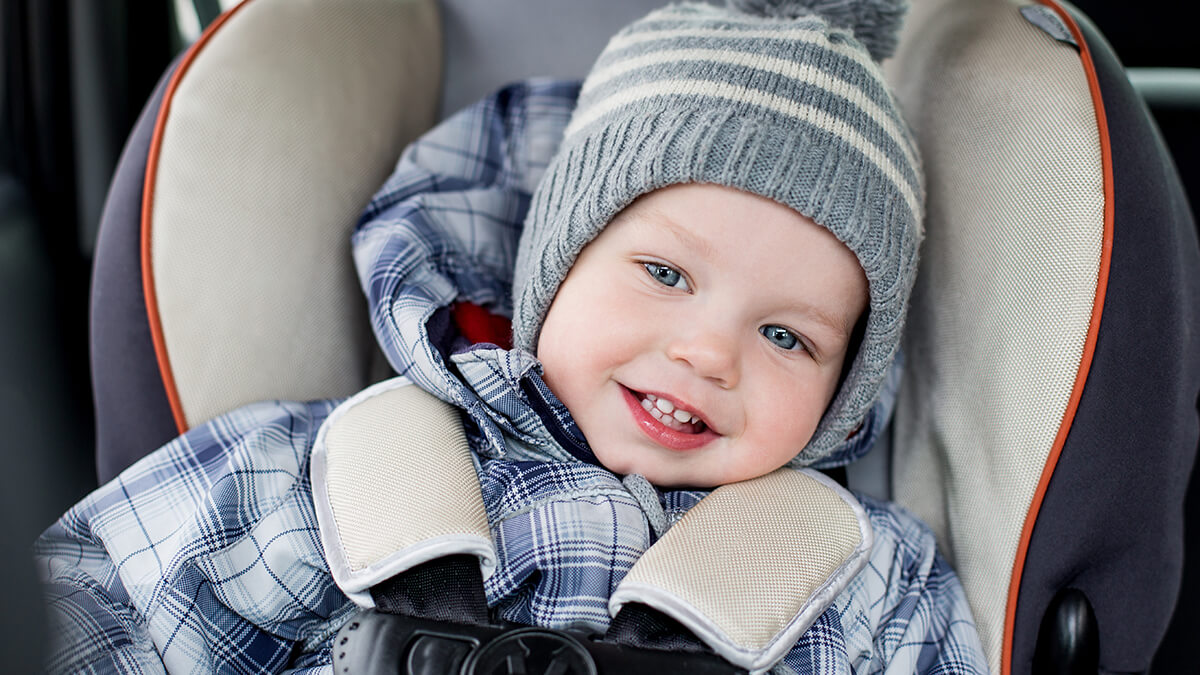Harris, Reed & Seiferth
|
 Most bikers hang up their helmets when the temperature drops, but the dedicated crowd rides on. The key, they say, is staying warm and toasty. It’s easier to stay warm while you ride than one might think. The temperature feels colder when you are piercing through the air at high speeds, but heated motorcycle accessories and good old fashioned layering will keep you comfortable during your fall ride. Try these tactics to stay warm this fall!
Now that you know how to stay warm, get the most out of your bike with year-round riding! Just remember to be safe and, most importantly, have fun. Source: https://www.foremost.com/learning-center/stay-warm-while-you-ride.asp
0 Comments
 A burglary occurs approximately every 15 seconds in the United States. Home security has become an important issue for everyone, no matter where you live. While there's no foolproof way to stop every break-in, many burglaries are preventable. Keep in mind that burglars search for easy targets. Here are some security measures that may force burglars to look elsewhere: Use the right locks and solid doors
Secure sliding patio doors and windows:
Protect your home with proper lighting:
Don't give thieves an easy way in:
Source: https://www.foremost.com/learning-center/home-theft-deterrents.asp
Apparently I fell off the face of the planet when it comes to car seat safety. Despite reading all the NHTSA tips for car seats, doing the safety checks, and experiencing Michigan winters my whole life, I have never, ever heard of winter car seat safety. If have a bundled up little one, this is a must-read and must-share on your Facebook page to educate other parents. The rule to remember: No bulky coats on children in car seats. First, let me divulge a few of the (brutally honest) thoughts that came to mind when I heard this:
Here's a simple way to test the bulk of your child's coat:
Keep them warm, and safe. If you find your child's coat is too bulky to buckle them in safely, here are some alternate options to keep your child warm:
Source: https://www.foremost.com/learning-center/car-seat-safety-for-snow-state-mommies-and-daddies.asp
 You did it! The key has been given, the contract has been signed and the first payment has been provided. Maybe you'll be staying in your new home for the rest of your life or maybe you'll be moving out in a few months – either way, it's an exciting time of life! Moving in can either be a great experience or a tough one, depending on how organized you are and the amount of enthusiasm your happy helpers have. Unpacking and preparing your new home may seem daunting right now, but once everything is said and done, you'll breathe such a sigh of relief. Take advantage of this moving in checklist to keep the process as smooth and enjoyable as possible! To see the other three blogs in this four-part series, click on any of the buttons below.  Inspect delivered boxes. Since you've already (hopefully) made your handy dandy household inventory sheet before moving everything out of your old residence, it should be easy to check each moving box against the detailed list as it's brought into your new home. If a box seems to be missing, inform the moving crew and see if it was accidentally left in the moving truck or was misplaced elsewhere. Once the movers are gone, inspect each of the moving boxes/personal items for damages obtained while in the hands of the moving company. If you find any items that have been broken or seemingly mistreated, write down the specific damage on your inventory sheet and contact the moving company to work through the issue together. Hopefully, if you've done your research and found reliable movers, the company will resolve the issue quickly. However, if they are not as trustworthy as they should be, you have the right to file a complaint against the moving company. Take pictures. Many rental properties charge a security deposit to new tenants in case damages are made throughout their stay. If you're moving into an apartment or rental home, snap a few pictures of the place right when you move in to document any damages made before your occupancy. Unfortunately, security deposit scams are fairly common, so be sure to protect yourself from the unnecessary charges later on. Check for cracked windows, nail holes in the wall, or anything of that sort which might condemn you later on. Your landlord is not able to withhold your security deposit for normal "wear and tear" like worn carpet, faded paint, or worn hardwood. Get utilities up and running. Hopefully you arranged the connection of the main house utilities before you moved, but if you didn't, do it as quickly as you can! Call your power and water providers to get things running smoothly before attempting everything else. Once the fundamentals are taken care of, contact your internet provider, trash/recycling remover and other important services to finish the job. Clean before unpacking. Before you start tackling all those boxes lying around, give your new home a good cleaning to get rid of any dirt or dust left from the builder or previous tenant. Someone has probably already come around with a duster and a rag, but it wouldn't hurt to wipe everything down one more time. Common places that are forgotten are the inside of kitchen cabinets, the trim on walls, light switches and door knobs. Unpack essentials. The Everest that is your giant inventory of boxes is not easily overcome, so taking it one step at a time is the best way to proceed. The bedroom and primary bathroom for each of your residents should be tackled first, followed by the kitchen and living room. Take the boxes labeled bedroom, bathroom, living room, kitchen, into each of the rooms so you can separate them properly before revealing their contents. If you've been following along well with this series, you should have packed a suitcase with essentials for the first few nights of your stay. Use those belongings to get you through the first few days instead of immediately unpacking your closet or the entirety of your bathroom supplies. Unpack everything else. You've already unpacked the essentials, but the rest of the house still needs some doing-up! I know it looks like a daunting task, but eventually all of those boxes will be gone and your new abode will look awesome. Recycle packing materials. Unpacking will leave you with quite the impressive amount of packing materials you probably no longer need. Ask friends or family if they have a need for any of the materials before recycling the rest. If you don’t want to get rid of them just yet, moving containers, bubble wrap and clean packing paper could also be a great way to store different belongings in a basement, garage or storage unit. Childproof home. If you've just moved in with a little one, make sure to childproof the areas where that child will spend most of his or her time – I'd begin in the nursery or living room. Secure the changing station, electrical outlets, and windows in the nursery as well as the bathrooms and stairs in the rest of the home. Nothing would be more stressful than moving into your new place and having your child stumble into an accident. Meet your neighbors. Perhaps one of the most important parts of enjoying the next however many years you stay – meet the neighbors! If you have awesome neighbors, they may have already stopped by and provided cookies or a hand in the unpacking process, but make sure you take the effort to go out and meet all of your closest neighbors. Recruit their help if you've moved into a new area you're not familiar with – what are the best restaurants, playgrounds, and grocery stores in the area? Congratulations on the move, and enjoy your new home! Source: https://www.foremost.com/learning-center/moving-in.asp
 Moving is bittersweet. The excitement that comes from changing scenery and beginning a new adventure cannot be denied, but if you've enjoyed whatever living situation you've been in, leaving can be especially difficult. Not to mention, moving is exhausting! However, if we want to move onto that next adventure, there are steps we have to take. In the first two blogs of this four-part series, we prepared ourselves for the move and learned the proper techniques for packing like pros. Now that our accounts are all in check, we can steam ahead and get to the exciting part – actually moving! Make your move a bit less stressful by following this checklist for a successful day. To read the other blogs in this series, click on any of the buttons below. Confirm arrangements with your mover Hopefully, if you've been planning on having a moving company help on the day of, you will have contacted them by now. If not, pick up that phone and make arrangements immediately! If you have already made arrangements, call and confirm them with your mover, detailing different belongings to make sure they show up with the proper equipment. Ask friends and family to help The more the merrier! Moving out is stressful no matter how many people are lending a hand. Recruit your friends and family to help you move, especially if you have not hired a moving company. Consider making it something of a party, with music and soda to keep the energy high as you sweat your home to vacancy. Take inventory Completing a home inventory checklist is one of the best ways to keep track of your possessions before a move. It will also be handy to have an accurate record for insurance purposes in case of theft, fire or other disaster. Before the movers leave, sign the inventory list and keep a copy for your own personal records. Also, check out this article from Unpakt to see what technique is best for you. Take pictures of new home (if renting) If you're moving into a rental, take pictures of your place before the move in date so you are not charged with any damages made prior to your occupancy. Request time off from work on the day of your move .If you're planning to move on a work day, request that day off so you can supervise the day from start to finish. Plan a payment with your mover. If you haven't already discussed payment through a credit card with your mover, get a money order, cashier's check or cash for final payment and a tip. If the movers have done a good job, it is customary to tip anywhere from 10% to 15% of the total fee for the move. Congratulations, you've officially moved out of your old home! Now that that's taken care of, make sure to check in next week where we'll talk about how to move into your new pad. Source: https://www.foremost.com/learning-center/movin-on-out.asp
 The time has come…do I keep renting, or do I buy? I've been renting various apartments for most of my life because it's been easy and convenient. However, since I've decided to stay in my city long-term, there's no reason not to start looking at homes on the market. From a financial perspective, it's a lot smarter. I would rather build equity with a home than continue to pay for something I'll never own. I was talking with a friend about home ownership, which is when she mentioned getting a condo, instead! The more I considered it, the more I started warming up to the idea of living in one – so I decided to make a pros and cons list for you and me! Pros of owning a condo: Amenities at my leisure. Along with owning a condo, you have several different condo amenities available to you, which may include a fitness center, pool and play area for children. No more outdoor maintenance. The last thing I want to do when I get home from work is mow the grass and work on landscaping. Thanks to the homeowner association, I will no longer have to do any yard or exterior work on my building (that includes the roof!). Also, depending on your association agreement, they may also cover snow removal. Lower price tag. Buying a condo is more affordable than buying a single family home. The number, of course, depends on the size of the condo, and the cost of living in the area. More Security. Certain condos provide gated entries, doormen, or even security guards for their residents. This is very important for someone who lives alone. Also, being in close proximity to your neighbors is beneficial if you ever have an emergency, or feel like you’re in danger. Cons of owning a condo: Homeowners association fees. All of those fabulous amenities, maintenance and other services are only available because of the HOA fees you have to pay every month. Yes, this is on top of paying your mortgage. The fees can range from a $200 to a thousand dollars or more a month, and can be raised at different times throughout the year. You must live by the rules. Condo associations have a set of rules to keep the building well-kept and everyone happy. The rules are often things like: no loud music after 10 p.m., keeping up the appearance of your home at all times, and in some cases, no pets allowed. They can even enforce what color they want to paint the exterior of your condo, and you have no say in the matter. Not as private. You are very close to your neighbors, so sometimes it can feel like nothing is private. Along with sharing walls, you share parking, pools, tennis courts, etc. There are probably times it will have the same feel as living in an apartment. There is such a thing as detached condos, but that comes with a higher price tag. Condos appreciate at a slower rate. This is because when you own a condo, you don't own any land, which is a key factor that increases a home's value. Instead, you only own the inside of the unit. I don't plan on living in a condo forever, so this was a big thing to consider. In addition to my list, I'm getting some insight from people who currently live in condos to hear what they like, and don't like. If you currently live in a condo, feel free to share your experience in the comments below!
 Did you become a landlord this year by accident? Unforeseen circumstances like job relocation, downsizing, or home inheritance may have put you in this category. Now that tax season is underway, the Internal Revenue Service won't see your "accidental landlord" status as an accident. In fact, if you rent any space for 15 days or more, you'll need to report your rental property and earnings on your federal income statement, according to the IRS. Here are three tips to help steer you in the right direction as you file your taxes as an "accidental landlord" this year. 1. Gather records of your income and expenses Record your rental income earnings from the prior year and all cash-related expenditures on the property on IRS 1040 Form Schedule E. Things like property taxes, energy costs, association fees, maintenance and landlord insurance, legal fees (if a lawyer drafted your rental contracts), ad costs to rent the space, and repairs are now deductible because your home is a rental property and not a personal residence. In recent years, there's been an increase on rental property audits, so be sure you have receipts and proper documentation to support your deductions in case you're audited. 2. Exclude security deposits If you have a hefty deposit that was returned during the taxable year, don't forget to leave that out of your statement. 3. Take depreciation Tax pros who have real estate experience may be able to help you calculate your annual allowance for wear and tear. Taking depreciation helps offset any drop in property value. The IRS states that if you meet the following requirements below, your property is eligible for depreciation:
Source: http://www.naylornetwork.com/caa-nwl/articles/index-v2.asp?aid=144523&issueID=24000
Source: https://www.foremost.com/learning-center/tax-tips-for-accidental-landlords.asp |
Categories
All
Archives
May 2024
|
Social MediaContact UsNavigation |
|
Website by InsuranceSplash
Privacy Policy | Terms of Use
© 2025 by HARRIS, REED & SEIFERTH INSURANCE GROUP, INC. All rights reserved.
© 2025 by HARRIS, REED & SEIFERTH INSURANCE GROUP, INC. All rights reserved.


 RSS Feed
RSS Feed